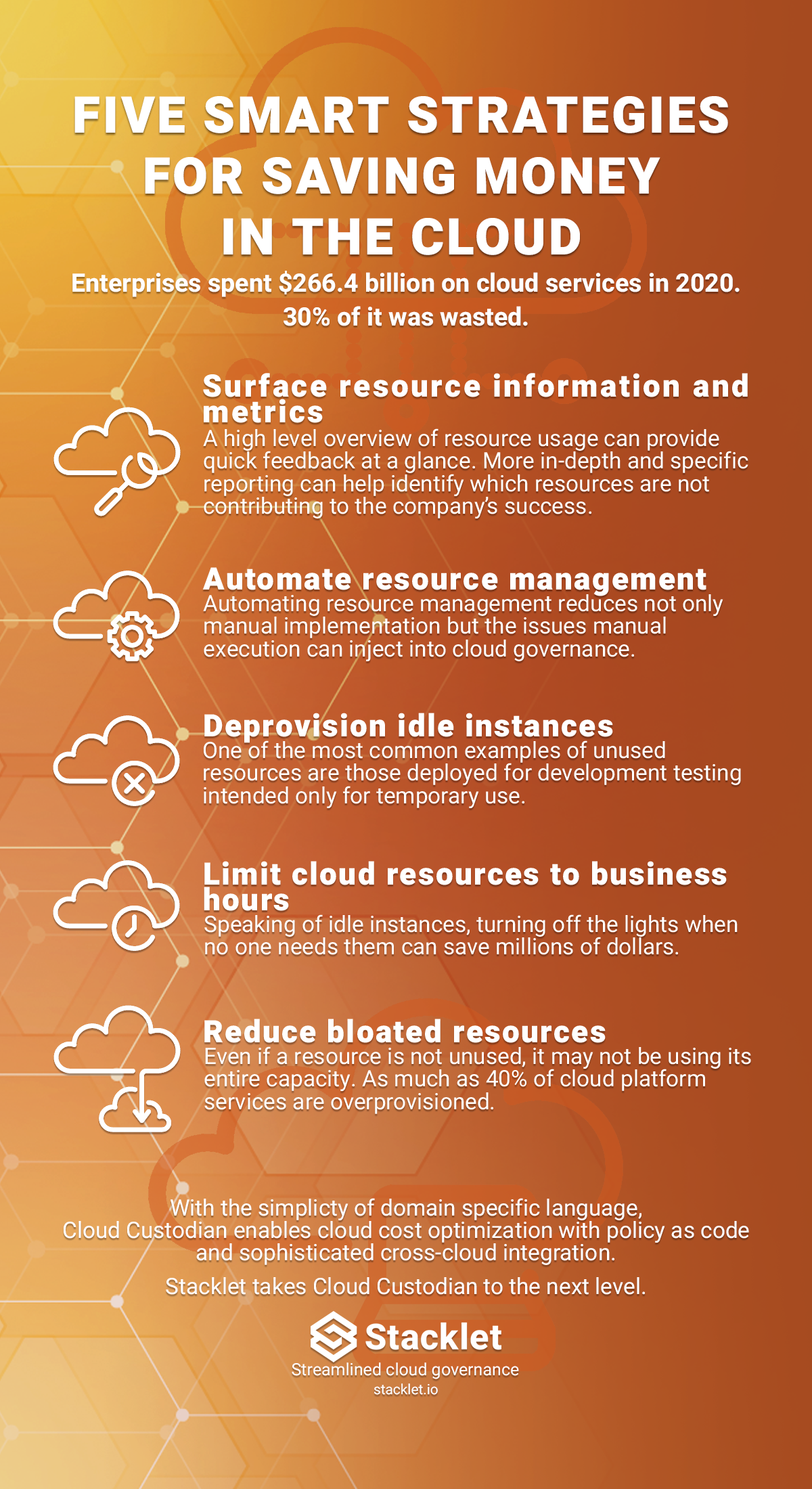Five Smart Strategies for Saving Money in the Cloud
Of the $266.4 billion enterprises spent on cloud services, it is estimated that at least 30% of that cost simply evaporated into nothing. This is known as “cloud waste,” and it is littered throughout remote infrastructures.
So while one of the allures of cloud computing is its promise of quicker, more flexible development and saving costs on physical resource management, these very features can undermine a company’s cloud budget. Some of the primary sources of cloud waste are unused storage volumes, databases, and oversized and idle resources.
With the new remote world COVID-19 is leaving in its wake, the forecast for efficient cloud spend is stormy.
Enterprises can weather the storm with the following five strategies:
Surface resource information and metrics
A high level overview of resource usage can provide quick feedback at a glance. More in-depth and specific reporting can not only help identify which resources are not contributing to the company’s success, but which resources are policy noncompliant, and therefore a potential security risk.
Automate resource management
Automating resource management reduces not only manual implementation but the issues manual execution can inject into cloud governance. Furthermore, cloud policies tailored to the particular requirements of an enterprise means a company’s remote infrastructure remains within budget.
Deprovision idle instances
One of the most common examples of unused resources are those deployed for development testing intended only for temporary use. Testing is a critical part of engineering — especially testing against real services. However, live systems integration testing can result in entire fleets of cloud resources spinning with the lights on when no one is home.
Limit cloud resources to business hours
Speaking of idle instances, turning off the lights when no one needs them can save millions of dollars. Scheduling automated resource operation only during business days and hours helps reduce cloud waste, reserving those expenses for what really matters.
Reduce bloated resources
Even if a resource is not unused, it may not be using its full capacity. As much as 40% of cloud platform services are overprovisioned. Provisioning instances appropriately sized for their places in a system infrastructure ensures efficient spending.
Cloud Custodian Is an Open Source Project That Can Help Implement These Solutions
Cloud Custodian was born at scale to not only meet the strict cloud governance needs of enterprises, but to help enterprises identify and execute on cost saving cloud strategies.
Spearheaded by Kapil Thangavelu, Cloud Custodian simplifies cloud management to a policy as code language. High order and YAML based, the language of Cloud Custodian leverages a DSL composed of public cloud resource information.
While still deeply involved in Cloud Custodian, Thangavelu recently became the co-founder of his own startup. Stacklet extends the power of Cloud Custodian to an enterprise product.
Stacklet Makes Cloud Custodian Even More Meaningful to Enterprises
With a mission to streamline cloud governance, the Stacklet platform provides a whole suite of sophisticated cloud management tools and features. Among them is out-of-the-box “policy packs,” which package up some of the most common and intricate cloud rules. These policy packs are self-service, customizable, and governed by strict adherence to cloud best practices.
This abstraction of cloud management means enterprises can further reduce their cloud expenses — not just by implementing the above solutions but expediting the entire software development process and granting freedom for more significant innovation.

Categories
- cost optimization


